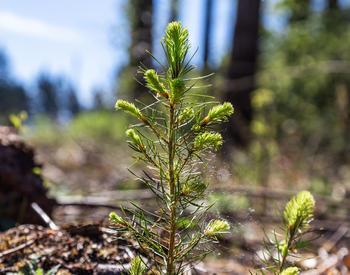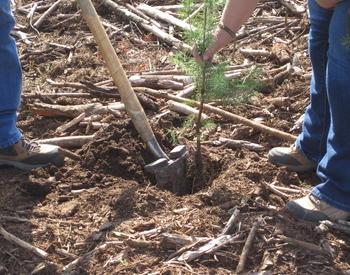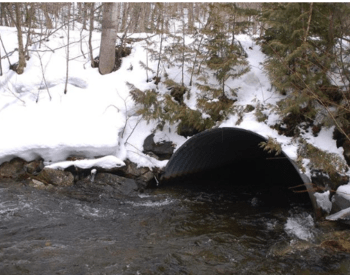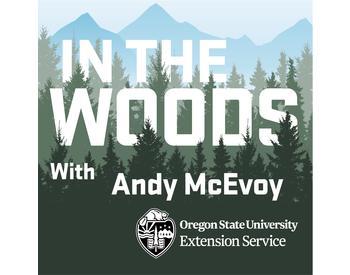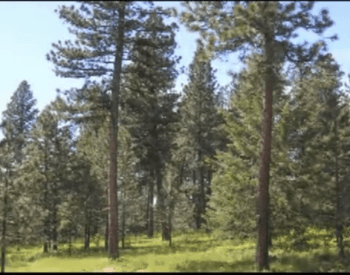WALTERVILLE, Ore. – When Steve Raymen’s forest was younger, early foresters might have called it a “biological desert.”
Raymen’s small tract in Lane County features large, rich stands of Douglas-fir, western red cedar and western hemlock, mixed with a lush understory of alder, vine maple, Indian plum and lady fern. In decades past, these dense forests without big game weren’t valued for anything other than wood, Oregon State University Extension forester Lauren Grand said.
“We look at it with different eyes now,” said Grand, an OSU assistant professor of practice who led a walking tour of Raymen’s land on Oct. 12 that drew two dozen people. Raymen bought his property in 1990, attracted to the old trees and the habitat they provided for many species of birds, northern red-legged frogs and an occasional mountain lion.
“The old-growth drew me in,” Raymen said.
A 600-year-old Douglas-fir in one place may not be the same size as a 200-year-old tree in another location, Grand said.
“Old growth isn’t just an age,” Grand explained. “Trees of the same age grow at different sizes and ages depending on the resources they have.”
Old-growth forests are typically composed of large trees, greater than 40 inches in diameter. They include a mix of shade-tolerant species and trees that prefer sun. Snags and downed logs provide habitat for the many species of wildlife that thrive in old-growth forests.
“Old-growth holds a special place in our hearts,” Grand said.
Dianne Rankin traveled from her home near Florence to participate in the tour. The event offered her a chance to see what a portion of her 190-acre property could one day be like.
“I want to learn how to make it be like this,” she said.

